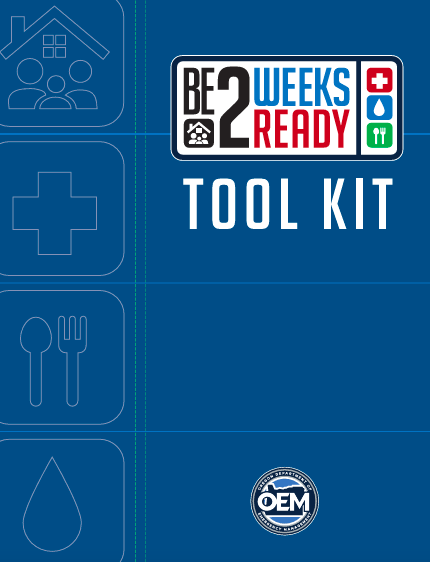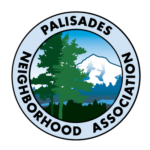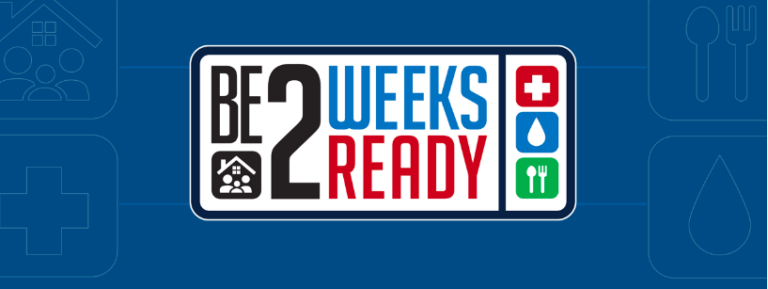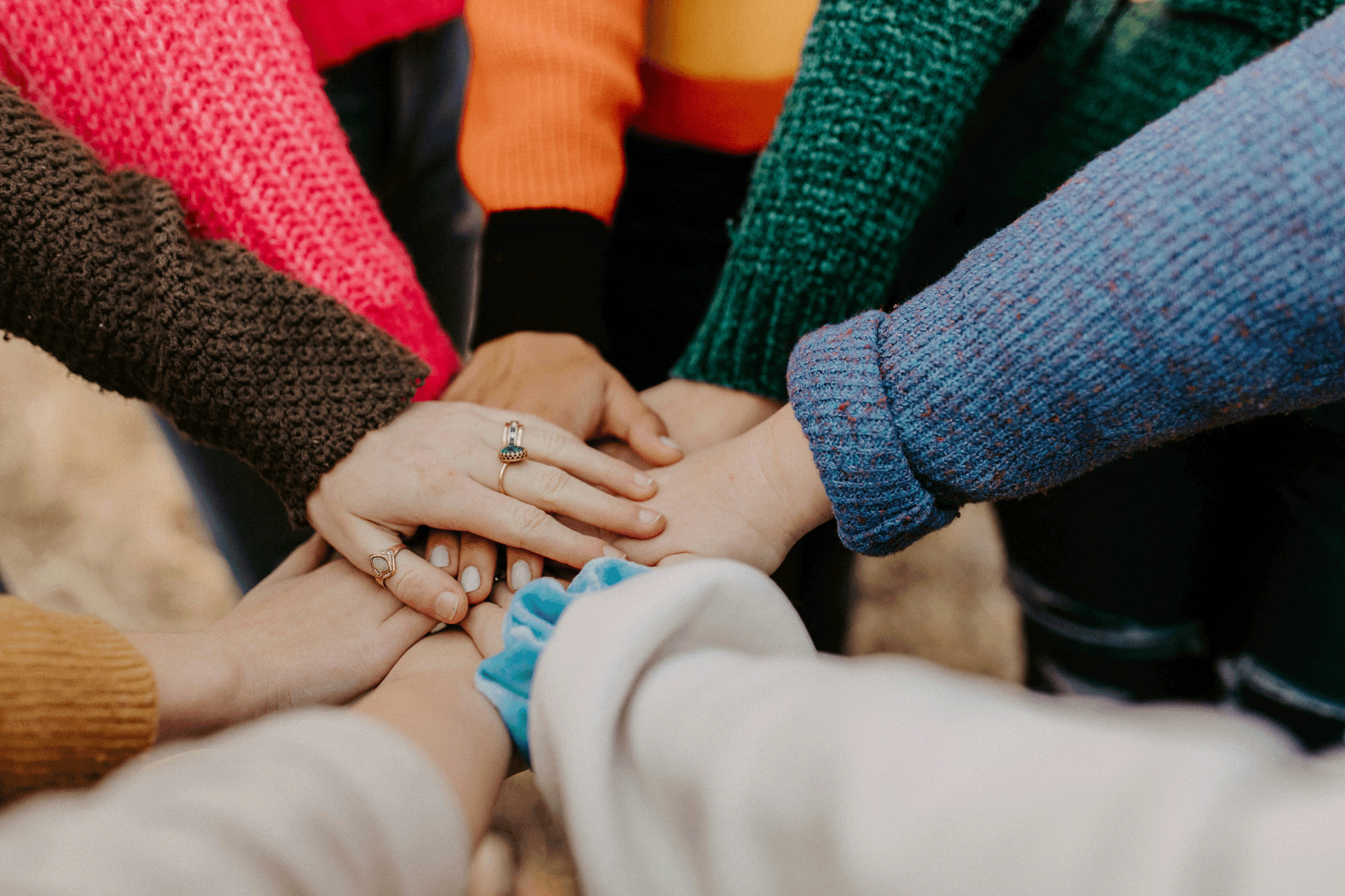
PNA has been following the City of Lake Oswego’s adoption of the Be 2 Weeks Ready (B2WR) Program. Oregon has faced a series of emergencies, including floods, droughts, wildfires, ice storms, heatwaves, and a pandemic. These events show the critical importance of being prepared. The Oregon Office of Emergency Management (OEM) aims to empower people to prepare effectively because once a disaster occurs, preparation time is over. This is why individuals, families, and communities should strive to “Be 2 Weeks Ready.”
“Over the last few newsletters, the B2WR topics have focused our attention on preparing our families to look after ourselves for two weeks. We’ve ensured our families have enough food and water, somewhere to shelter safely, can deal with biological waste. and have an emergency
plan. These are are important steps for household preparedness.
This month, we look at the bigger picture. During an area-wide disaster, city and county resources will be working on efforts that do the greatest good for the greatest number of people. The city will be relying on our neighborhood to work together to help each other. Those of you with medical skills will have an important role to play. Likewise, those who own and can operate equipment such as generators or chainsaws will be needed. Everyone can help somehow – just surveying damage to your street is important work.
The best way to prepare to help your neighbors during a disaster is become a trained Community Emergency Response Team (CERT) member.
Lake Oswego Fire Department will run a CERT class in November. It’s a couple hours commitment one night a week for six weeks. Please sign up -having more CERT members in our community. It’s a fun and eye-opening class!” – Andrew Watson, Palisades Neighbor
For information regarding Oregon’s overall efforts and to read more in depth about Part 8: Emergency Management, click here.
Summary of Part 8: Emergency Management
Emergency management agencies at the federal, state, tribal and local levels help protect people and places during disasters. Emergency managers partner with the public to help everyone Be 2 Weeks Ready. Building prepared communities means knowing what support you may or may not receive from emergency managers and first responders after a disaster and planning accordingly. Know where to go when the official response doesn’t meet all your needs.
QUICK START STEPS
What is Emergency Management?
- Emergency Alerts
- Community Emergency Response Teams (CERT)
- Get Involved
WHAT IS EMERGENCY MANAGEMENT?
Emergency management focuses on mitigating, preparing for, responding to and recovering from disasters. Local, state, tribal and federal governments all have emergency management functions, as do many other private and nonprofit organizations.
The Federal Emergency Management Agency (FEMA) is the national-level emergency management organization. The Oregon Department of Emergency Management is the state-level emergency management department that coordinates with and supports the state’s counties, cities and communities.
Along with coordinating the response to help ensure timely and effective use of resources, emergency managers also:
Run local emergency preparedness programs. Many emergency management offices provide specific information for children, families and communities.
Plan for local hazards. This helps local governments identify and plan for the most likely hazards faced by that community.
Create local response plans. Your community has hazards that will require evacuation, sheltering in place and other protective actions. Local emergency management offices coordinate and deliver important alerts and information to their communities. It’s your responsibility to be aware of what’s going on and prepare your community.
EMERGENCY ALERTS
No single tool will provide enough warning to all residents in all situations. Each emergency warning method has its limitations. That’s why signing up for multiple alerts will increase your awareness of what’s happening in your community.
OR-Alert: This website is a resource to search for local emergency alerts in Oregon. Visit www.oralert.gov and enter your county, city, tribe or zip code, and you’ll be rerouted to your local sheriff or emergency management website to sign up or update your information to receive alerts.
County or Tribal Emergency Alerts: Visit your county or tribal emergency management website to sign up or update your contact information. You can find this information at www.oregon.gov/oem/documents/locals_list.pdf.
Emergency Alert System (EAS): These alerts are broadcast through radio, TV and cable TV. You do not have to sign up for them. You can find radio and TV stations on your local emergency management office’s website that will broadcast these messages in your area. Program the stations into your car radio and tape the numbers to your battery-operated emergency radio.
Wireless Emergency Alerts (WEA): These alerts allow your cell phone to receive alerts specific to your area. This is a free service that can be received on both prepaid and postpaid mobile devices. However, not all areas receive WEAs and not all phones can receive alerts, depending on your carrier.
NOAA Weather Radio: A nationwide network of radio stations broadcasting continuous weather information directly from the nearest National Weather Service office. You can find your community NOAA Weather Radio frequency at www.weather.gov.
Sirens: Some communities, especially those with tsunami risk, will use a loud siren to broadcast alerts. Pay attention to the regular tests of these systems so you know what to listen for in an emergency.
ShakeAlert Earthquake Early Warning System: ShakeAlert detects significant earthquakes (Magnitude 4.5+ in Oregon) and sends a real-time alert to people on compatible cell phones and other mobile devices through WEA and apps as they become available. ShakeAlert does not predict when or where an earthquake will occur or how long it will last.
COMMUNITY EMERGENCY RESPONSE TEAMS CERT
As you and your household work to Be 2 Weeks Ready, you may decide to become more involved in emergency management and disaster preparedness in your community. One way to increase your preparedness training is to join your local CERT program.
CERT is a FEMA-sponsored program that educates and trains volunteers in disaster preparedness. This program offers a consistent platform to create teams that professional responders can rely on during disaster situations.
There are four types of CERT programs: Community, Workplace, Campus and Teen. Each program is supported by a sponsoring organization. A sponsoring organization can be any government agency, such as a fire department, emergency management agency or city council.
As a member of CERT, you will be trained in basic disaster response skills, such as disaster medical operations, disaster psychology, fire safety, and light search and rescue. It’s up to the sponsoring organization to determine how teams will be utilized. The most common activities CERT members participate in are traffic and crowd management, supporting emergency operation centers and distributing preparedness information to the public.
There are more than 50 active CERT programs in Oregon. No matter your skill set, there’s a place for everyone in CERT. Visit www.oregon.gov/oem to find a team in your area.
GET INVOLVED
You can also get involved in preparedness activities by participating in the Great ShakeOut and the Great Camp-In. Both events allow you to use your supplies and practice your emergency plan before a disaster happens.
Great ShakeOut: A national earthquake drill that happens every year on the third Thursday in October. You can coordinate and conduct a drill practicing Drop, Cover and Hold On in your household, business or community. Visit www.shakeout.org/oregon to register.
Great Camp-In: This event takes place the weekend following the Great ShakeOut drill. It’s an opportunity to implement your Be 2 Weeks Ready plan and practice what it would be like to survive in your home without basic services, such as plumbing and electricity. The Great Camp-In can be modified to fit individual needs and can be practiced for the full two days or just a few hours.
Lastly, talk to your neighbors, coworkers and other people you see regularly about their plan and resources. You may find out that people you know have valuable skills when it comes to preparedness like advanced first-aid training. You’ll also want to know who may need additional help when a disaster or emergency happens. Communities can survive and bounce back from a disaster more quickly when everyone works together.
For assistance, explore this activity in the Be 2 Weeks Ready Program Toolkit.


